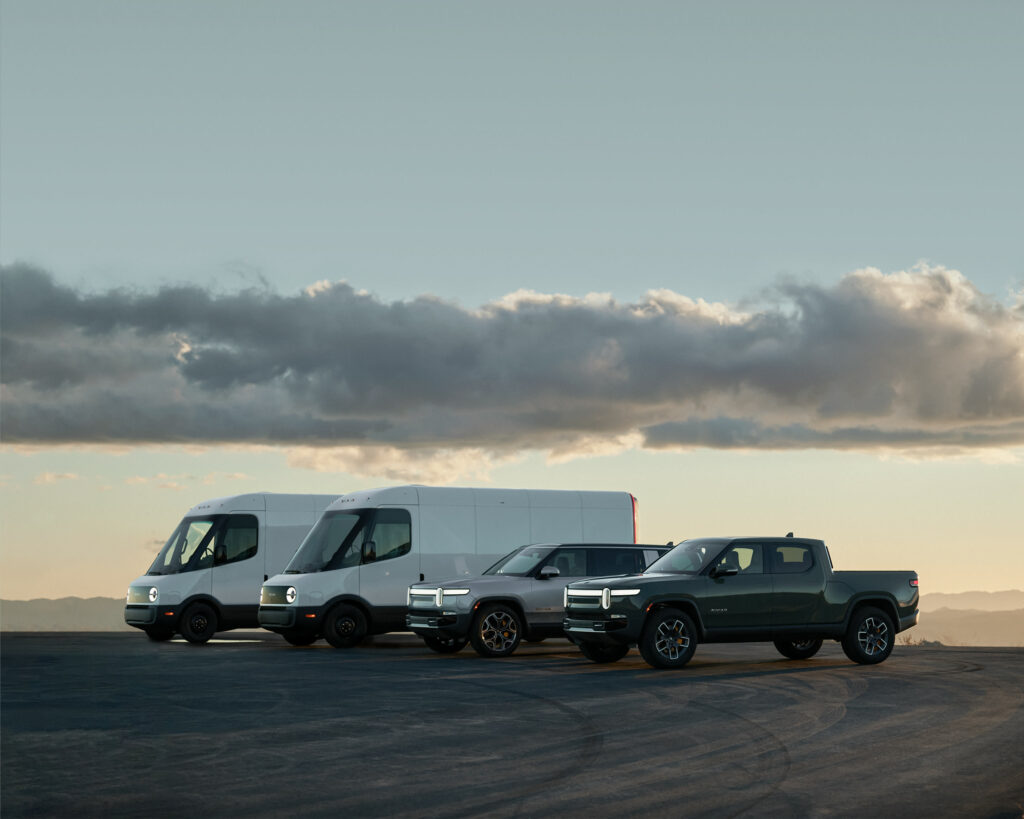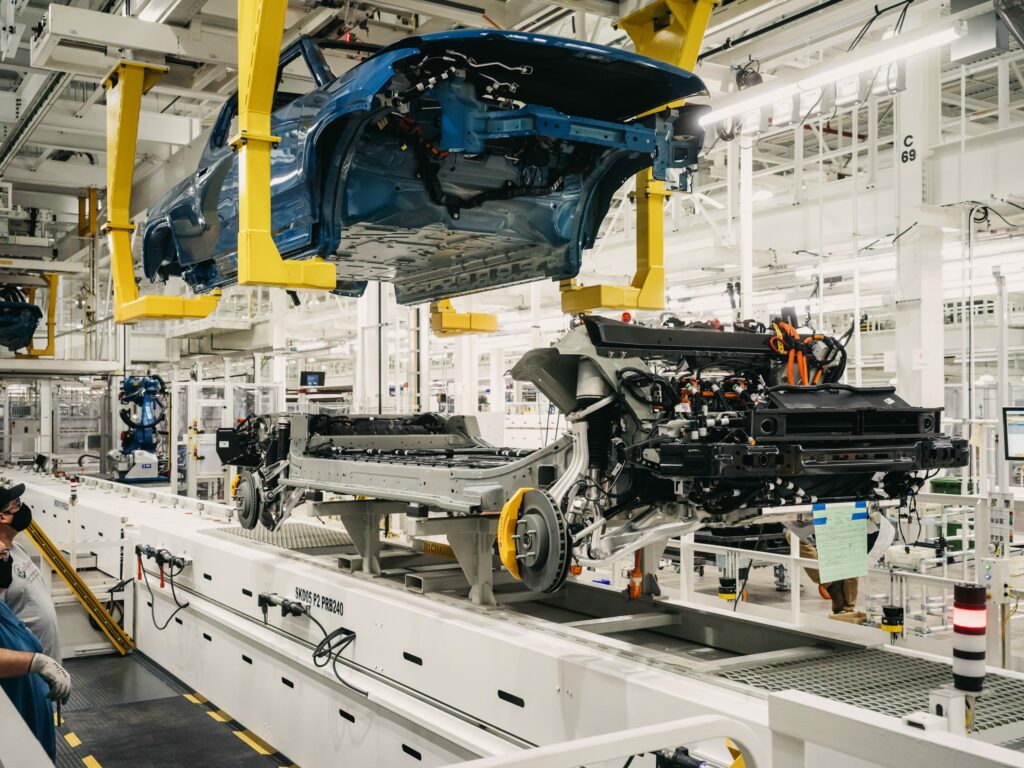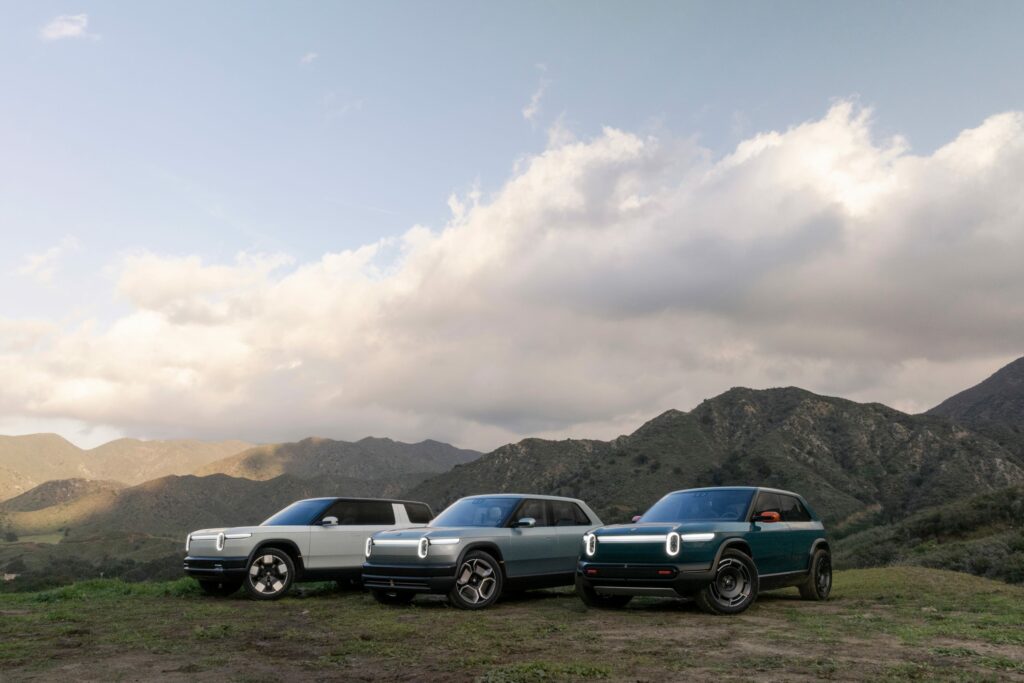
The U.S. Department of Energy (DOE) has extended a conditional commitment for a $6.6 billion loan to Rivian Automotive (RIVN) under its Advanced Technology Vehicle Manufacturing (ATVM) Loan Program. This funding aims to reignite Rivian’s plans for a next-generation electric vehicle factory in Georgia.
With ambitions to expand its production capacity and solidify its place in the EV market, this development could significantly shape Rivian’s trajectory and bolster U.S. EV leadership.
A $6.6 Billion Boost for Rivian’s R2 and R3
Rivian’s planned facility in Stanton Springs North, Georgia, will serve as the production hub for its upcoming midsize EV platform, which includes the R2 SUV and R3 crossover. These vehicles represent a strategic shift for Rivian toward more affordable models without sacrificing performance.
Once completed, the plant is expected to produce up to 400,000 vehicles annually, divided into two phases of 200,000 units each. Production is scheduled to begin in 2028.

The project is expected to generate a significant economic impact, creating 2,000 full-time construction jobs and 7,500 permanent positions by 2030.
For Rivian, this expansion is not just about scaling operations; it’s about capturing a larger share of the growing midsize EV market, where affordability and practicality are becoming essential selling points.
The Numbers Behind Rivian’s Gamble
Rivian has had its share of financial turbulence, with quarterly losses reaching $1.1 billion and overall projected losses for the year approaching $2.88 billion.
Earlier this year, the company paused its Georgia plans to focus resources on its Illinois plant, but this DOE loan could provide the necessary runway to restart construction and stabilize its operations.

The $6.6 billion loan, which includes $6 billion in principal and $600 million in capitalized interest, comes at a crucial time. It follows a $1.5 billion incentive package from the state of Georgia and a $5.8 billion partnership with Volkswagen for software and drivetrain development.
These combined efforts underscore Rivian’s commitment to creating a competitive manufacturing ecosystem for its midsize EV lineup.
Why It Matters: Rivian’s Survival and U.S. EV Leadership
The R2 and R3 models are pivotal for Rivian’s long-term strategy. Positioned as more accessible EVs, they represent a critical step in making electric vehicles mainstream while addressing increasing competition.
This loan is also a strategic win for the U.S. government, which is eager to maintain its leadership in EV technology and manufacturing. The DOE’s investment signals a strong belief in Rivian’s potential to drive innovation and job creation.

However, Rivian’s success hinges on more than just production capabilities. The political climate is shifting, with uncertainty surrounding the future of federal support for EV initiatives. Rivian must act swiftly to meet the technical, legal, environmental, and financial conditions tied to the loan, as delays could jeopardize both funding and timelines.
Challenges Ahead: A Balancing Act
While the loan provides much-needed momentum, Rivian faces a series of challenges. The company’s financial struggles remain a concern, with losses mounting as it scales operations. Additionally, the changing political landscape could impact federal EV policies, potentially complicating Rivian’s plans. Competition in the EV market is also intensifying, with legacy automakers and startups alike vying for dominance.

Rivian’s strategy to pivot toward midsize, cost-effective vehicles is a bold move that could pay off, but execution is everything. The Georgia plant must come online as scheduled, and the company must ensure its new models meet consumer expectations for quality and pricing.
Charge Complete: A High-Stakes Bet on the Future
The DOE’s $6.6 billion loan is more than just a financial commitment; it’s a test of Rivian’s ability to deliver on its promises. If the R2 and R3 lines succeed, they could redefine the company’s future and strengthen the U.S.’s position in the global EV race.

With production slated to begin in 2028, the stakes are high, but Rivian’s ambitions remain firmly planted in an electric future.




